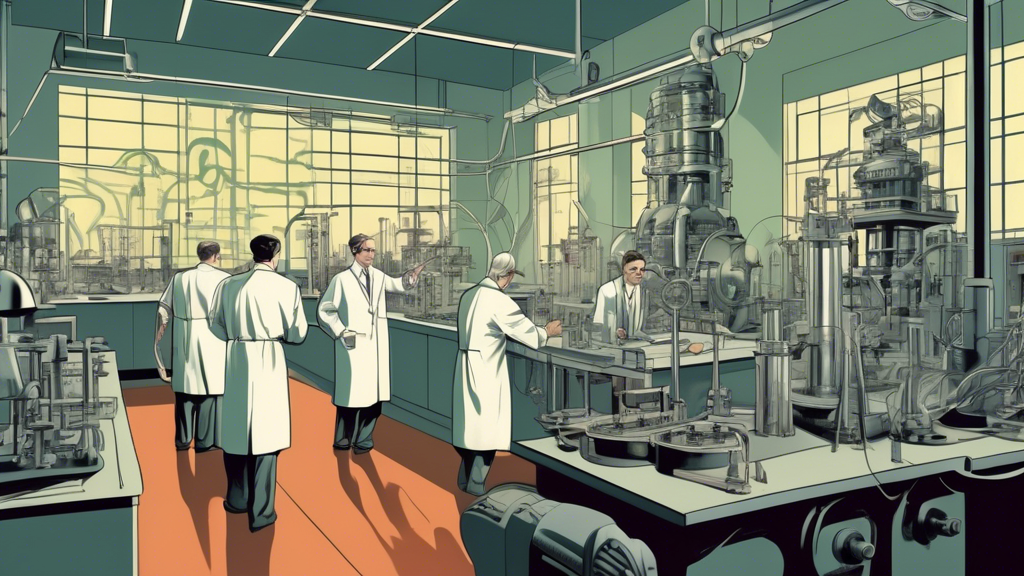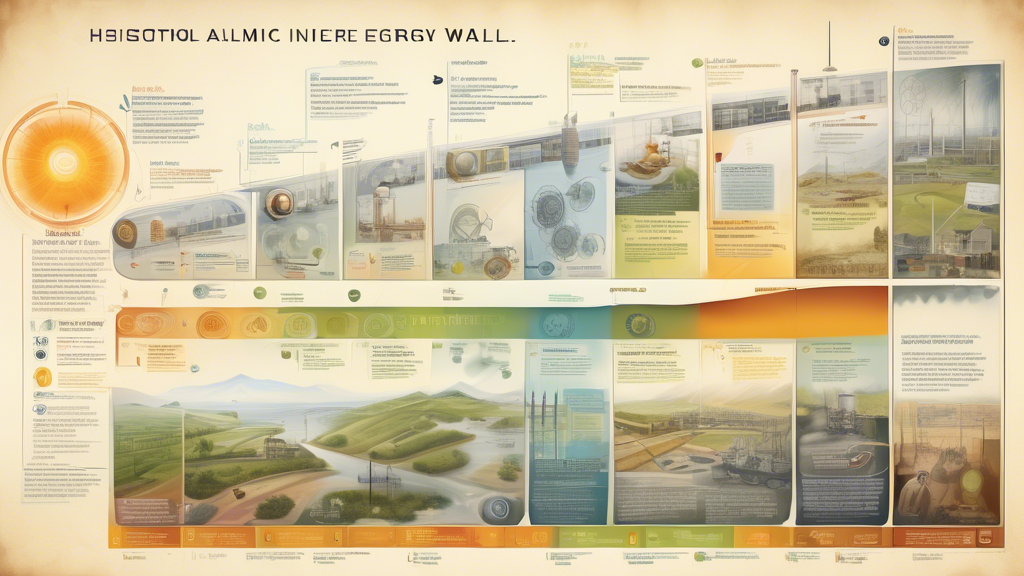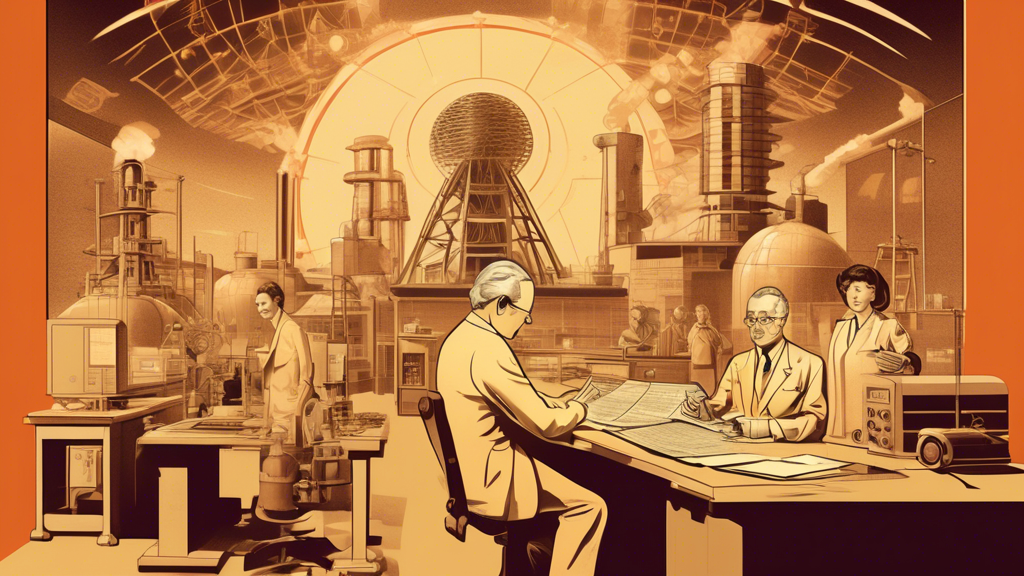Established in the aftermath of World War II, the AEC played a crucial role in shaping the era’s political, scientific, and technological landscapes. Its influence stretched from spearheading the Manhattan Project to guiding Cold War policies and fostering significant technological innovations.
Let’s examine the AEC’s critical milestones, from its formation and initial goals to its significant contributions during the Cold War and its lasting impact on modern energy policies. We’ll also explore how the AEC led the nuclear age and left a lasting legacy that continues to influence current nuclear advancements and safety regulations.
Introduction: The Atomic Energy Commission: A Key Player in 20th Century History
The Atomic Energy Commission (AEC) emerged as a powerful entity in the mid-20th century. Established to oversee nuclear energy and weapon development, its influence extended far beyond its initial mandate. The AEC played a pivotal role in shaping numerous historical events and trajectories.
During its existence, the AEC dealt with nuclear technology’s dual nature: power generation and weaponization. Two primary focuses defined its impact: the regulation and promotion of civilian nuclear energy and the development and control of the United States’ nuclear arsenal.
Key figures in U.S. history contributed to the AEC’s direction and policies. Scientists, government officials, and military leaders collaborated, marking significant achievements and milestones.
The AEC’s involvement during World War II was crucial. The Manhattan Project, a secretive wartime initiative, was instrumental in developing the first atomic bombs. This project, overseen by the AEC’s precursors, paved the way for the commission’s formation.
Post-World War II, the AEC continued to shape the Cold War era. It directed nuclear arms development, leading to significant technological advances, including nuclear reactors, weapons systems, and safety protocols. The AEC also contributed to global diplomacy efforts, working on international treaties focused on nuclear non-proliferation and arms control.
As the Cold War progressed, the AEC’s role evolved. It impacted U.S. domestic policies and economic strategies, influencing energy consumption and generation. The commission faced challenges and public scrutiny, prompting changes and reforms.
Eventually, the AEC transformed into the Nuclear Regulatory Commission (NRC). This shift marked a new era focused on safety and regulation rather than development and expansion. However, the AEC’s legacy remains evident today. Its foundational work continues to influence modern energy policies and nuclear advancements.
The Atomic Energy Commission: A Key Player in 20th Century History aptly encapsulates the commission’s enduring impact. From its inception to its eventual transformation, the AEC’s legacy persists, shaping contemporary energy and nuclear safety discussions.
Make your next discovery where science meets surplus. Shop Obtainium

Formation and Early Years of the AEC
The Atomic Energy Commission (AEC) formation in 1946 marked a significant shift in the United States’ approach to nuclear energy. World War II had just ended, and the world saw the devastating power of atomic bombs in Hiroshima and Nagasaki. This historical context was crucial in driving the establishment of the AEC.
Historical Context Leading to the Establishment of the AEC
The fear of nuclear warfare and the desire to harness atomic energy for peaceful purposes set the stage for the AEC’s creation. The U.S. government realized the importance of controlling nuclear energy for security and scientific progress. President Harry S. Truman signed the Atomic Energy Act on August 1, 1946, officially establishing the AEC. This act transferred control of atomic energy from military to civilian hands, aiming to promote nuclear technology for peaceful use.
Key Figures Involved in the Creation
Several notable figures played pivotal roles in the creation of the AEC. David E. Lilienthal, the inaugural chairman, stood out due to his leadership and vision. Lilienthal’s background as the director of the Tennessee Valley Authority provided him with the expertise necessary for managing large-scale projects. Other key players included commissioners Lewis Strauss, Robert F. Bacher, and Sumner Pike, who brought diverse skills and perspectives to the commission. These leaders collectively shaped the AEC’s direction during its formative years.
Initial Objectives and Early Achievements
The AEC’s initial objectives were to develop nuclear energy, regulate its use, and ensure national security. It aimed to promote scientific research while maintaining strict controls over nuclear materials. In its early years, the AEC achieved significant milestones, such as establishing national laboratories like Los Alamos and Oak Ridge. These laboratories became innovation hubs, leading to nuclear science and technology breakthroughs. Early achievements included advancements in nuclear reactor design, medical isotopes, and the peaceful applications of atomic energy.
Role During World War II and the Manhattan Project
The AEC’s roots lay in the Manhattan Project, the top-secret World War II program dedicated to developing atomic bombs. The project brought together brilliant scientists such as J. Robert Oppenheimer and Enrico Fermi. Their work culminated in the Trinity Test in July 1945, the first-ever detonation of a nuclear device. The success of the Manhattan Project underscored the potential of atomic energy, leading directly to the formation of the AEC. Although the Manhattan Project officially ended with the war, its legacy lived on through the AEC, which continued to push the boundaries of nuclear research and development.
AEC’s formation and early years were defined by a unique historical context, influential leaders, and ambitious objectives. These factors combined to establish the AEC as a cornerstone of 20th-century history, setting the stage for its future influence on global nuclear policy and technological progress.
Make your next discovery where science meets surplus. Shop Obtainium

The AEC’s Influence on Cold War Policies and Technological Advancements
The Atomic Energy Commission (AEC) played a vital role in shaping Cold War policies. One of its primary contributions was the development of nuclear arms. During this period, the AEC accelerated the research and production of nuclear weapons. This was crucial in maintaining a strategic balance between the United States and the Soviet Union.
Significant technological and scientific innovations also emerged under the AEC’s guidance. The commission backed numerous projects that led to advancements in nuclear reactor technology, which had dual uses in civilian energy production and military applications. Nuclear submarines are one example. They became a cornerstone of the U.S. naval strategy, enhancing the country’s defense capabilities.
The AEC also significantly influenced international diplomacy. It was actively involved in promoting nuclear non-proliferation. The commission worked with international bodies, contributing to the establishment of the International Atomic Energy Agency (IAEA), which was a key step in controlling the spread of nuclear technology and ensuring its peaceful use. By participating in global dialogues, the AEC helped shape treaties and agreements to reduce the risk of nuclear conflict.
On the domestic front, the AEC’s policies had a lasting impact on the United States’ energy strategy. The commission championed the development of nuclear power as a viable energy source. This had profound implications for the country’s energy policy, reducing reliance on fossil fuels and promoting energy independence. Initiatives like the Power Demonstration Reactor Program showcased the potential of nuclear energy for large-scale electricity generation.
Moreover, the AEC’s research extended beyond military and energy applications. It pushed scientific boundaries in nuclear medicine, agricultural applications, and other fields. For instance, the development of radiation therapy revolutionized the treatment of various cancers, saving countless lives. Similarly, using radioactive tracers in agriculture improved crop yields and food safety.
In summary, the AEC was instrumental in advancing nuclear technology during the Cold War. Its contributions spanned military, scientific, and diplomatic arenas, shaping national and international policies. The commission’s efforts in non-proliferation and energy strategy continue to influence contemporary approaches to nuclear energy and global security.
Make your next discovery where science meets surplus. Shop Obtainium

Legacy and Transformation: The AEC’s Enduring Impact on Modern Energy Policies
The Atomic Energy Commission (AEC) played a crucial role not only in the 20th century but also in shaping contemporary energy policies. The organization’s transition to the Nuclear Regulatory Commission (NRC) marked a new chapter in regulatory oversight. This shift aimed to ensure safety and address growing concerns about nuclear energy. Today, the NRC continues to uphold standards established by its predecessor, emphasizing safety, environmental responsibility, and technological innovation.
Transition to the Nuclear Regulatory Commission (NRC)
1974 the AEC was dissolved, and its regulatory responsibilities were transferred to the NRC. This move was driven by the need to separate promotional activities from regulatory duties. The NRC’s creation allowed for a clearer focus on regulating nuclear safety. The commission oversees the safe use of radioactive materials and ensures compliance with stringent safety standards. This transition underscored the importance of balancing energy development with public health and safety.
Lasting Impact on Energy Policies and Safety Regulations
The AEC’s legacy is evident in current energy policies and safety protocols. The regulations it introduced laid the groundwork for comprehensive oversight of nuclear energy. Modern policies emphasize stringent safety measures, rigorous testing, and continual assessment. This approach minimizes risks associated with nuclear power plants and fosters public trust. Today’s energy framework builds on the AEC’s pioneering work, ensuring nuclear energy remains viable and safe.
Contributions to Contemporary Nuclear Advancements
The AEC’s impact extends to modern nuclear technology. The commission’s early research paved the way for advancements in nuclear medicine, power generation, and national security. Innovative technologies, such as advanced and small modular reactors, trace their origins to AEC initiatives. These advancements promise cleaner, more efficient energy solutions and highlight the commission’s enduring influence on technological progress.
The AEC’s Enduring Legacy in 20th-Century History and Beyond
The Atomic Energy Commission’s pivotal role in the 20th century continues to shape modern energy policies and technologies. Its emphasis on safety, innovation, and regulatory oversight established standards that are still vital today. The AEC’s transition to the NRC marked a significant evolution in nuclear regulation, ensuring the safe use of nuclear energy. Through its contributions, the AEC remains a key player in not only 20th-century history but also in the ongoing development of energy strategies worldwide.
The Atomic Energy Commission (AEC) played a pivotal role in shaping the narrative of the 20th century. It emerged from a crucial historical context, driven by the need for advanced nuclear research during World War II. Key figures who established the AEC set its early objectives, which included significant achievements such as the development of atomic energy and its involvement in the Manhattan Project.
During the Cold War, the AEC’s contributions fundamentally influenced global and domestic policies. It drove the progression of nuclear arms development, fostering technological and scientific advances. Additionally, the AEC’s work in international diplomacy and non-proliferation underscored its importance in maintaining global peace and stability. On the domestic front, the AEC’s initiatives reshaped the U.S. energy strategy, embedding nuclear power into the national discourse.
The transition from the AEC to the Nuclear Regulatory Commission (NRC) marked a new chapter, but the AEC’s legacy endures. Its impact on energy policies and safety regulations continues to be felt today. Furthermore, the AEC’s pioneering efforts laid the groundwork for contemporary nuclear advancements, affirming its status as a key player in 20th-century history. The AEC leaves an indelible mark on the modern world through its profound influence on science, policy, and international relations.
Make your next discovery where science meets surplus. Shop Obtainium

